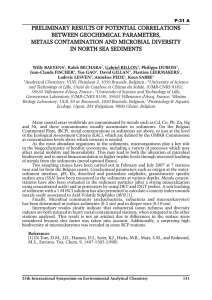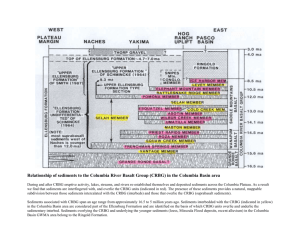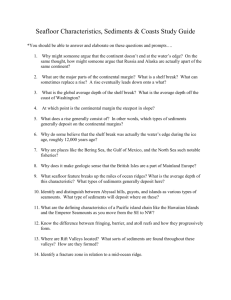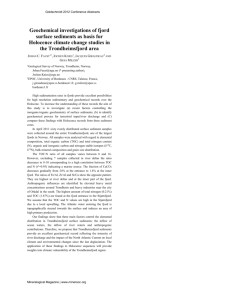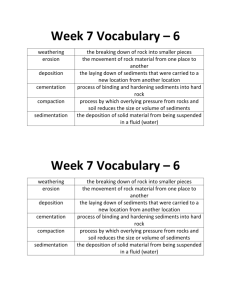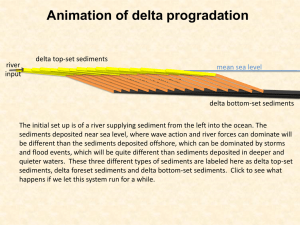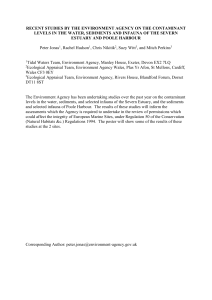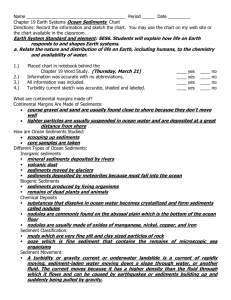10714_Astakhov
advertisement
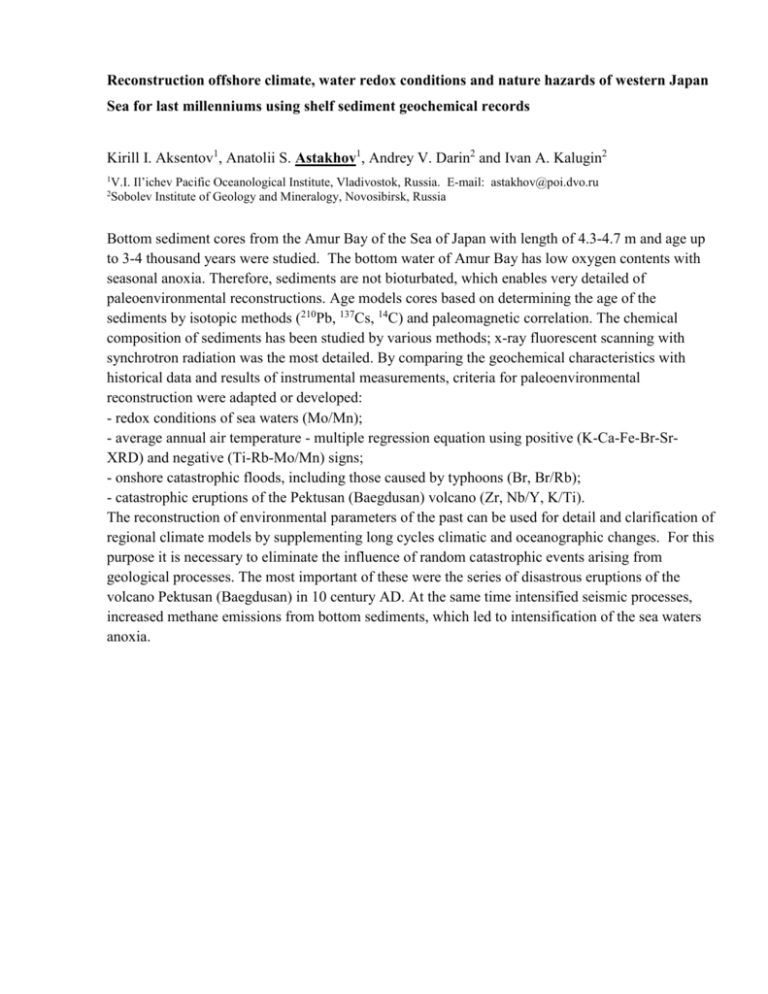
Reconstruction offshore climate, water redox conditions and nature hazards of western Japan Sea for last millenniums using shelf sediment geochemical records Kirill I. Аksentov1, Anatolii S. Аstakhov1, Andrey V. Darin2 and Ivan A. Kalugin2 1 2 V.I. Il’ichev Pacific Oceanological Institute, Vladivostok, Russia. E-mail: astakhov@poi.dvo.ru Sobolev Institute of Geology and Mineralogy, Novosibirsk, Russia Bottom sediment cores from the Amur Bay of the Sea of Japan with length of 4.3-4.7 m and age up to 3-4 thousand years were studied. The bottom water of Amur Bay has low oxygen contents with seasonal anoxia. Therefore, sediments are not bioturbated, which enables very detailed of paleoenvironmental reconstructions. Age models cores based on determining the age of the sediments by isotopic methods (210Pb, 137Cs, 14C) and paleomagnetic correlation. The chemical composition of sediments has been studied by various methods; x-ray fluorescent scanning with synchrotron radiation was the most detailed. By comparing the geochemical characteristics with historical data and results of instrumental measurements, criteria for paleoenvironmental reconstruction were adapted or developed: - redox conditions of sea waters (Mo/Mn); - average annual air temperature - multiple regression equation using positive (K-Ca-Fe-Br-SrXRD) and negative (Ti-Rb-Mo/Mn) signs; - onshore catastrophic floods, including those caused by typhoons (Br, Br/Rb); - catastrophic eruptions of the Pektusan (Baegdusan) volcano (Zr, Nb/Y, K/Ti). The reconstruction of environmental parameters of the past can be used for detail and clarification of regional climate models by supplementing long cycles climatic and oceanographic changes. For this purpose it is necessary to eliminate the influence of random catastrophic events arising from geological processes. The most important of these were the series of disastrous eruptions of the volcano Pektusan (Baegdusan) in 10 century AD. At the same time intensified seismic processes, increased methane emissions from bottom sediments, which led to intensification of the sea waters anoxia.
